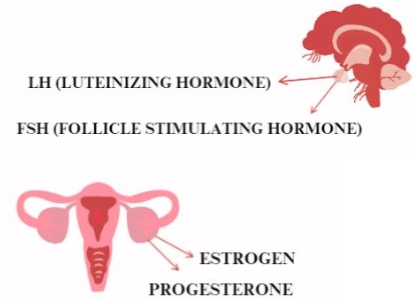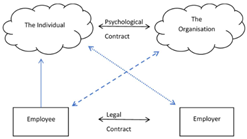Exploring the efficacy of neuro-linguistic programming in alleviating school challenges among primary schoolchildren in Lebanon
Abstract
This four-month study investigated the impact of neuro-linguistic programming (NLP) sessions on the strengths and difficulties of 128 elementary school students from a private school in Lebanon. Paired T-test and Pearson correlation analyses examined changes in behavior and academic performance pre- and post-NLP intervention. The findings revealed a significant reduction in headaches, stomachaches, and overall negative emotions such as unhappiness, depression, or tearfulness after NLP sessions. Although the case group had a higher proportion of females, no notable gender-based differences were observed. Positive correlations were identified between student age and emotional and conduct scores. While there was a decrease in reported fights and bullying post-intervention, it did not reach statistical significance. The study advocates for integrating NLP into traditional medical treatment programs, emphasizing its potential as a non-medical intervention, especially in integrated pain management strategies. The research underscores NLP’s role in addressing emotional and behavioral challenges among students.
References
[1]Grinder J. The origins of neuro linguistic programming. Crown House Publishing; 2013.
[2]Jahan J, Tariq M, Nadeem M. The effects of neuro-linguistic programming on a psychotherapist’s communication patterns: A case study. Journal of Development and Social Sciences. 2022; 3(2): 130-140.
[3]Choube G, Dudhmande GR, Pushparaj J, et al. Predicting Modalities of Dyslexic Students using Neuro-Linguistic Programming to Enhance Learning Method. In: Proceedings of the 2022 IEEE International Conference on Data Science and Information System (ICDSIS). doi: 10.1109/icdsis55133.2022.9915905
[4]Doğan R, Doğan A, Bağci N. The Effect of Neuro-Linguistic Programming on Depression, Anxiety and Stress in Liver Transplant Patients. Medical Records. 2022; 4(1): 102-110. doi: 10.37990/medr.1031528
[5]Fakehy M. Managing Test Anxiety and its influences on academic achievements using Neuro-Linguistic Programming (NLP) among College Students - Follow-up Study. Journal of Applied Sports Science. 2022; 12(1): 38-45. doi: 10.21608/jass.2022.121903.1076
[6]Hashmi F. Nourishing Critical Thinking Skills using Neuro-Linguistic Programming. PJE. 2022; 39(1).
[7]Espinales ANV, Moreno JAV. Neuro-linguistic programming in the teaching-learning process of English as a foreign language. PalArch’s Journal of Archaeology of Egypt/Egyptology. 2021; 18(4): 5566-5576.
[8]Farahani F. The Effect of Neuro-Linguistic Programming (NLP) on Reading Comprehension in English for Specific Purposes Courses. International Journal of Education and Literacy Studies. 2018; 6(1): 79. doi: 10.7575/aiac.ijels.v.6n.1p.79
[9]Zamfir CM. The NLP model of communication. BAS British and American Studies. 2015; (21): 225-228.
[10]Etuka JM, Athota VS, Kearney S. How can emotional intelligence (EI) and neuro-linguistic programming (NLP) help leaders with the ability to deal with the impact of COVID-19? Knowledge Management Research & Practice. 2021; 19(4): 475-483. doi: 10.1080/14778238.2020.1860667
[11]Nompo RS, Pragholapati A, Thome AL. Effect of Neuro-Linguistic Programming (NLP) on Anxiety: A Systematic Literature Review. KnE Life Sciences. 2021; 2021: 496-507. doi: 10.18502/kls.v6i1.8640
[12]Gran S. Using NLP (Neuro-Linguistic Programming) methods in teaching and learning: Case studies on the potential and impact of NLP methods on learning and learners [PhD thesis]. Universität Duisburg-Essen. 2020.
[13]Thoriquttyas T, Faizin N, Ahsin n. Implementing Neuro-Linguistic Programming (NLP) as Teaching Innovation for Islamic Religious Education (IRE): A Study on Student’s Perception. In: Proceedings of the International Conference on Language, Education, and Social Science (ICLESS 2022). 2022.
[14]Zhang X, Davarpanah N, Izadpanah S. The effect of neurolinguistic programming on academic achievement, emotional intelligence, and critical thinking of EFL learners. Frontiers in Psychology. 2023; 13. doi: 10.3389/fpsyg.2022.888797
[15]Daher J. Lebanon, how the post-war’s political economy led to the current economic and social crisis. European University Institute; 2022.
[16]Manana M, Ghanem D, Tarhini S, et al. Assessment of primary schoolchildren’s fluid intelligence using Raven’s Colored progressive matrices: A pilot cross-sectional study in Lebanon. World Journal of Advanced Research and Reviews. 2023; 19(3): 317-326. doi: 10.30574/wjarr.2023.19.3.1801
[17]Hatem G, Omar CA, Ghanem D, et al. Evaluation of the impact of online education on the health-related quality of life of medical students in Lebanon. Educación Médica. 2023; 24(3): 100812. doi: 10.1016/j.edumed.2023.100812
[18]Goodman A, Goodman R. Strengths and Difficulties Questionnaire as a Dimensional Measure of Child Mental Health. Journal of the American Academy of Child & Adolescent Psychiatry. 2009; 48(4): 400-403. doi: 10.1097/chi.0b013e3181985068
[19]Sobe H, Richter M, Berner R, et al. Functional improvement in children and adolescents with primary headache after an interdisciplinary multimodal therapy program: the DreKiP study. The Journal of Headache and Pain. 2022; 23(1). doi: 10.1186/s10194-022-01481-1
[20]Fisher E, Villanueva G, Henschke N, et al. Efficacy and safety of pharmacological, physical, and psychological interventions for the management of chronic pain in children: a WHO systematic review and meta-analysis. Pain. 2021; 163(1): e1-e19. doi: 10.1097/j.pain.0000000000002297
[21]Fechner R, Noel M, Verhagen A, et al. Do Teachers Question the Reality of Pain in Their Students? A Survey Using the Concept of Pain Inventory-Proxy (COPI-Proxy). Children. 2023; 10(2): 370. doi: 10.3390/children10020370
[22]Martinsen KD, Rasmussen LMP, Wentzel-Larsen T, et al. Prevention of anxiety and depression in school children: Effectiveness of the transdiagnostic EMOTION program. Journal of Consulting and Clinical Psychology. 2019; 87(2): 212-219. doi: 10.1037/ccp0000360
[23]Savarledavar M, Kuan G. The Use of Neuro-Linguistic Programming as an Educational-Therapeutic Programme: Two Case Studies. Education in Medicine Journal. 2017; 9(1): 49-58. doi: 10.21315/eimj2017.9.1.5
[24]Lau MA, Temcheff CE, Poirier M, et al. Longitudinal relationships between conduct problems, depressive symptoms, and school dropout. Journal of School Psychology. 2023; 96: 12-23. doi: 10.1016/j.jsp.2022.10.005
[25]Swearer SM, Wang C, Berry B, et al. Reducing Bullying: Application of Social Cognitive Theory. Theory Into Practice. 2014; 53(4): 271-277. doi: 10.1080/00405841.2014.947221
[26]Drigas A, Mitsea E, Skianis C. Neuro-Linguistic Programming, Positive Psychology & VR in Special Education. Scientific Electronic Archives. 2021; 15(1). doi: 10.36560/15120221497
[27]Arnold LE, Hodgkins P, Kahle J, et al. Long-Term Outcomes of ADHD: Academic Achievement and Performance. Journal of Attention Disorders. 2015; 24(1): 73-85. doi: 10.1177/1087054714566076
[28]La Grutta S, Epifanio MS, Piombo MA, et al. Emotional Competence in Primary School Children: Examining the Effect of a Psycho-Educational Group Intervention: A Pilot Prospective Study. International Journal of Environmental Research and Public Health. 2022; 19(13): 7628. doi: 10.3390/ijerph19137628
[29]Cui Y, Li F, Leckman JF, et al. The prevalence of behavioral and emotional problems among Chinese school children and adolescents aged 6–16: a national survey. European Child & Adolescent Psychiatry. 2020; 30(2): 233-241. doi: 10.1007/s00787-020-01507-6
[30]Overgaard KR, Oerbeck B, Friis S, et al. Attention-deficit/hyperactivity disorder from preschool to school age: change and stability of parent and teacher reports. European Child & Adolescent Psychiatry. 2022; 32(10): 1947-1955. doi: 10.1007/s00787-022-02019-1
[31]Mowlem FD, Rosenqvist MA, Martin J, et al. Sex differences in predicting ADHD clinical diagnosis and pharmacological treatment. European Child & Adolescent Psychiatry. 2018; 28(4): 481-489. doi: 10.1007/s00787-018-1211-3
[32]Asanjarani F, Gao MM, de Silva A, et al. Exploring the Link between Interparental Conflict and Adolescents’ Adjustment in Divorced and Intact Iranian Families. Journal of Child and Family Studies. 2021; 31(6): 1596-1606. doi: 10.1007/s10826-021-02163-3
Copyright (c) 2023 Hiba Chehabeddine, Mouna Chehabeddine, Hiba Abdo, Inaam Nasrallah, Assem El-Kak, Georges Hatem

This work is licensed under a Creative Commons Attribution 4.0 International License.









